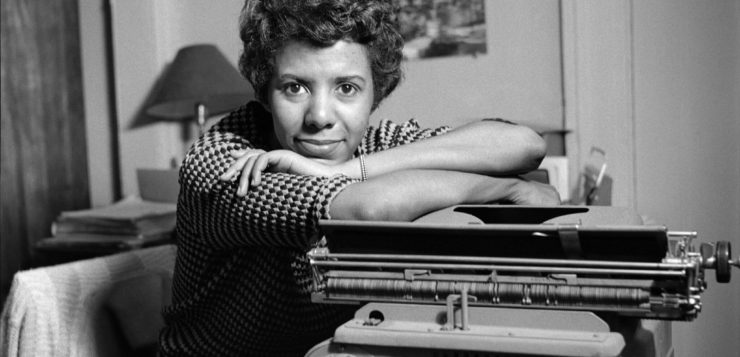 LORRAINE HANSBERRY
LORRAINE HANSBERRY
The Life Behind A Raisin in the Sun
by Charles J. Shields
Henry Holt & Co. 367 pages, $29.99
LORRAINE HANSBERRY (1930-1965) has experienced a revival of interest in recent years, with several biographies and collections of her interviews coming out. Charles J. Shields, author of a biography of Harper Lee, contributes to this trend with a carefully researched and highly readable life of the playwright, whose A Raisin in the Sun is still performed, read, and discussed more than sixty years after it opened on Broadway in 1959. The book examines aspects of Hansberry’s story not usually discussed at length, including her sexuality. Although married to songwriter and fellow activist Bob Nemiroff, Hansberry considered him more a friend and critic than a husband. He encouraged her play writing, read her drafts, and offered suggestions.
After reading Simone de Beauvoir’s The Second Sex, Hansberry was inspired by its discussion of lesbianism to explore her own attraction to women. Accordingly, her lesbianism was as much an intellectual and activist stance as it was a sexual orientation. She wrote letters, always under a pseudonym, to gay and lesbian publications, including the first gay magazine, ONE (published by an offshoot of the Mattachine Society), and its sister magazine, the Daughters of Bilitis’ The Ladder. Responding to an article arguing that lesbians needed to dress conservatively to avoid provoking mainstream society, she defended the individual’s freedom of dress but acknowledged, as a Black person, that such compromises were sometimes necessary. She wrote two plays, The Apples of Autumn and Flowers for the General, that featured women with same-sex desires. Having written them while she was married, Hansberry was disappointed by Nemiroff’s reaction to a reading, feeling that he did not understand “a single thing—least of all the implications.”

After divorcing Nemiroff, Hansberry became involved with women, many of whom were “preppy, cardigan-wearing” types, pretty to look at but not Hansberry’s intellectual equals. She may have had a relationship with Molly Malone Cook, a Village Voice photographer who later became poet Mary Oliver’s partner, and she met authors Patricia Highsmith and Louise Fitzhugh. Her last relationship was with Dorothy Secules, a tenant in the Greenwich Village apartment building that Hansberry purchased with her earnings from A Raisin in the Sun.
And yet, she carefully kept this part of her life a secret. Shortly after the play opened on Broadway, the Daughters of Bilitis asked if she would be willing to come out publicly as a lesbian, but she politely declined, recognizing that it would only complicate her position as a Black, female playwright. For a while after the divorce, she continued to live with Nemiroff, so that even the FBI, which kept her under surveillance for her involvement in Communist and civil rights activities, apparently had no idea she was a lesbian.
Shields’ biography also examines Hansberry’s family history. Her father was nicknamed the “Kitchenette King of Chicago” for building and owning many low-rent, tiny apartments in which many Black families lived. The family was upper-middle class, moving to an all-white community in the face of resistance. This experience would partly inspire the setting and plot for her most famous play. Meanwhile, her father would be charged and fined multiple times for being a slumlord, ultimately escaping to California. Hansberry never fully resolved this tension between her progressive ideals and the source of her family’s wealth.
Shields argues that Raisin in the Sun was so popular to audiences because it was an “old-fashioned” play that dealt with important social issues. Hansberry, however, felt frustrated that so many white critics and audiences missed the main point of the play, which was to challenge class oppression and capitalism. With mini-portraits of the figures and issues that shaped Hansberry’s thought, this biography sheds new light on a remarkable writer and intellectual.
Charles Green, a writer based in Annapolis, MD, is a frequent contributor to these pages.






